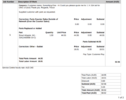15 AMP circuit is by code to be a dedicated circuit back to the switch board.
But in my case it was an old circuit that has been upgraded to have 15amp socket. So I will just limit my max charge to 12 Amps.
But for the 10Amp plug - this is good news! Having it go from 8 to 10 will be great for when going to peoples places etc.
As an electrician, most 15A sockets are wired to dedicated circuit breaker in the SB. However, there is no actual requirement to do so. It's simply the fact that if you are installing a 15A socket, there must be an appliance plugging into it thats likely to draw 15A and you are going to wire it assuming that that current will be continuous. It's more than likely that the cabling, all things being equal, will still just be 2.5mm2 unless a large distance is invloved. Plugging in something that draws 15A on a socket that was originally wired for 10A is unlikely to cause a safety issue as generally, all outlets are wired in minimum 2.5mm2 and protected by a CB that is rated for the 2.5mm2 cable. After all, half a house with 15 double 10A outlets is still generally wired to one 16 or 20A CB.
Obviously if there are other things on the circuit, you will get nusiance overcurrent tripping.
And, not meaning to be annoying, but in Australia, there is no electrical "Code". Each state has an Electrical Act, from which how to follow it are defined in each states "Electrical Regulations", each Electrical Regulation refers technical details to the Australian & New Zealand Standard AS/NZS:3000, known as the "Wiring Rules". Australian wiring rules have a lot less specifics about what you can and can't do unlike what I read in the US. We appear to maintain electrical safety by rules based on formulas while leaving actual "ingenunity" up to the electrician and electrical engineers. For instance, rather that checking what circuit breaker must be used with what cable, I would work out what the maximum current draw will be, pick a circuit breaker above that, then check what size cable will flow the current of the CB (After all, the CB protects the cable, not the appliance), check the length of the run to make sure voltage drop isn't an issue and a bigger cable required for that, then check the fault loop impeedance. All of this is up to me, no particular circuit breaker is written in the wiring rules. Obviously this is an over simplification, but gives a good idea of how our system works.



